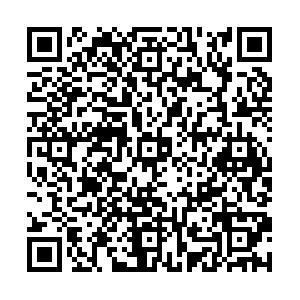Association between sleep duration and social anxiety in children and adolecsents
-
摘要:
目的 分析儿童青少年睡眠时间与社交焦虑的关联,为提倡儿童青少年保持健康的生活方式进而促进心理健康提供依据。 方法 于2020年在北京市采取整群随机抽样的方式招募1 145名7~16岁儿童青少年,对其进行一般身体测量和问卷调查,使用儿童社交焦虑量表和匹兹堡睡眠质量指数量表评价儿童青少年的社交焦虑症状和睡眠时间。使用t检验比较不同组社交焦虑得分的差异,使用多元线性回归模型分析睡眠时间与社交焦虑之间的关联。 结果 研究对象的社交焦虑平均得分为(5.47±4.18)分,女生、13~16岁、每日中高强度体力活动时间不足和睡眠时间不足的儿童青少年社交焦虑分数较高(t值分别为-4.34,-6.14,3.35,2.93,P值均 < 0.05)。多元线性回归模型结果显示,在调整相关的混杂因素后,总体的睡眠时间每增加1 h,社交焦虑分数降低0.78分(β=-0.78,95%CI=-1.03~-0.54,P < 0.01),男生和女生的社交焦虑分数分别降低0.60(95%CI=-0.95~-0.25)和0.90(95%CI=-1.24~-0.56)分,7~12和13~16岁儿童青少年的社交焦虑分数分别降低0.75(95%CI=-1.11~-0.40)和0.76分(95%CI=-1.11~-0.41),非超重肥胖和超重肥胖儿童分别降低0.78(95%CI=-1.09~-0.48)和0.81分(95%CI=-1.22~-0.41)(P值均 < 0.01)。 结论 不同性别、年龄、营养状况儿童青少年社交焦虑程度不同,睡眠时间延长与社交焦虑分数降低相关。保证充足的睡眠有助于降低儿童青少年的社交焦虑程度,提高心理健康水平。 Abstract:Objective To analyze the association between sleep duration and social anxiety in Chinese children and adolescents to provide evidence for promoting healthy lifestyle and mental health in children and adolescents. Methods A total of 1 145 children and adolescents aged 7-16 were recruited by cluster random sampling in Beijing in 2020, and received a series of body measurements and questionnaire survey. Social Anxiety Scale for Children (SASC) and Pittsburgh Sleep Quality Index (PSQI) were used to evaluate the social anxiety symptoms and sleep duration of children and adolescents. T-test was used to compare the differences of social anxiety level in different groups, and multivariate linear regression analysis was used to analyze the relationship between sleep duration and social anxiety. Results The average score of social anxiety was (5.47±4.18). The social anxiety score of girls, participants aged 13-16, with insufficient physical activity and insufficient sleep duration were higher (t=-4.34, -6.14, 3.35, 2.93, P < 0.05). The results of multivariate linear regression model showed that after adjusting confounding factors, social anxiety decreased by 0.78 for each additional hour of sleep duration (β=-0.78, 95%CI=-1.03--0.54, P < 0.01), with 0.60 in boys (95%CI=-0.95--0.25), 0.90 in girls (95%CI=-1.24--0.56), 0.75 among participants aged 7-12 (95%CI=-1.11--0.40) and 0.76 among participants aged 13~16 (95%CI=-1.11--0.41)(P < 0.01), respectively. Social anxiety among participants who were not overweight or obese decreased by 0.78(95%CI=-1.09--0.48) and 0.81 among overweight and obese group (95%CI=-1.22--0.41)(P < 0.01) for each additional hour of sleep duration, respectively. Conclusion Substantial differences in social anxiety are observed in children and adolescents by gender, age group and nutritional status. Sufficient sleep duration is significantly related to the decrease of social anxiety, and improve the overall level of student mental health. -
Key words:
- Sleep /
- Time /
- Anxiety /
- Mental health /
- Regression analysis /
- Child /
- Adolescent
1) 利益冲突声明 所有作者声明无利益冲突。 -
表 1 不同组别儿童青少年社交焦虑得分比较(x±s)
Table 1. The score of Social Anxiety Scale in different groups of children and adolescents(x±s)
组别 选项 人数 得分 t值 P值 年龄/岁 7~12 666 4.82±3.85 -6.14 < 0.01 13~16 479 6.37±4.45 营养状况 非超重肥胖 680 5.46±4.06 -0.10 0.92 超重肥胖 465 5.48±4.36 体力活动时间* 不足 755 5.75±4.19 3.35 < 0.01 达标 343 4.85±4.16 睡眠时间 不足 1 056 5.56±4.23 2.93 < 0.01 达标 89 4.44±3.39 注: *表示存在缺失数据。 表 2 儿童青少年睡眠时间与社交焦虑得分的关联(n=1 145)
Table 2. The association of sleep duration and the score of Social Anxiety Scale(n=1 145)
模型 性别 β值(β值95%CI) P值 1 男 -0.73(-1.00~-0.45) < 0.01 女 -1.01(-1.28~-0.74) < 0.01 总体 -0.90(-1.10~-0.71) < 0.01 2 男 -0.71(-1.06~-0.37) < 0.01 女 -0.90(-1.23~-0.56) < 0.01 总体 -0.83(-1.07~-0.59) < 0.01 3 男 -0.60(-0.95~-0.25) < 0.01 女 -0.90(-1.24~-0.56) < 0.01 总体 -0.78(-1.03~-0.54) < 0.01 表 3 不同组别男女生睡眠时间与社交焦虑得分的关联
Table 3. The association of sleep duration and the score of Social Anxiety Scale in different groups between boys and girls
组别 选项 男生 女生 总体 人数 β值(β值95%CI) P值 人数 β值(β值95%CI) P值 人数 β值(β值95%CI) P值 年龄/岁 7~12 340 -0.53(-1.03~-0.04) 0.03 326 -1.07(-1.53~-0.62) < 0.01 666 -0.75(-1.11~-0.40) < 0.01 13~16 230 -0.62(-1.15~-0.08) 0.03 249 -0.79(-1.31~-0.26) < 0.01 479 -0.76(-1.11~-0.41) < 0.01 营养状况 非超重肥胖 325 -0.90(-1.38~-0.41) < 0.01 355 -0.70(-1.10~-0.31) < 0.01 680 -0.78(-1.09~-0.48) < 0.01 超重肥胖 245 -0.26(-0.77~0.26) 0.33 220 -1.33(-1.97~-0.70) < 0.01 465 -0.81(-1.22~-0.41) < 0.01 体力活动时间 不足 357 -0.55(-0.99~-0.10) 0.02 398 -0.96(-1.36~-0.56) < 0.01 755 -0.83(-1.12~-0.53) < 0.01 达标 193 -0.63(-1.20~-0.06) 0.03 150 -0.87(-1.54~-0.21) 0.01 343 -0.76(-1.20~-0.33) < 0.01 -
[1] MANNUZZA S, FYER A J, LIEBOWITZ M R, et al. Delineating the boundaries of social phobia-its relationship to panic disorder and agoraphobia[J]. J Anx Dis, 1990, 4(1): 41-59. doi: 10.1016/0887-6185(90)90023-3 [2] WITTCHEN H U, BELOCH E. The impact of social phobia on quality of life[J]. Int Clin Psychopharmacol, 1996, 11(Suppl 3): 15-23. [3] MCDOUGALL J, DEWIT D J, WRIGHT F V. Social anxiety symptoms among youth with chronic health conditions: trajectories and related factors[J]. Disab Rehabil, 2020, 42(23): 3293-3305. doi: 10.1080/09638288.2019.1590742 [4] WITTCHEN H U, FEHM L. Epidemiology and natural course of social fears and social phobia[J]. Acta Psychiatr Scand, 2003(417): 4-18. [5] LIANG M, GUO L, HUO J, et al. Prevalence of sleep disturbances in Chinese adolescents: a systematic review and Meta-analysis[J]. PLoS One, 2021, 16(3): e0247333. doi: 10.1371/journal.pone.0247333 [6] SADEH A, TIKOTZKY L, KAHN M. Sleep in infancy and childhood: implications for emotional and behavioral difficulties in adolescence and beyond[J]. Curr Opin Psych, 2014, 27(6): 453-459. doi: 10.1097/YCO.0000000000000109 [7] ZHAO X, CHEN J, CHEN M C, et al. Left-behind children in rural China experience higher levels of anxiety and poorer living conditions[J]. Acta Paediatr, 2014, 103(6): 665-670. doi: 10.1111/apa.12602 [8] WU Y L, ZHAO X, LI Y F, et al. The risk and protective factors in the development of childhood social anxiety symptoms among Chinese children[J]. Psychiat Res, 2016, 240: 103-109. doi: 10.1016/j.psychres.2015.08.046 [9] 李艳华, 钟佑洁, 黄海宁. 父母冲突和儿童社交焦虑_情绪安全感的中介作用[J]. 中国健康心理学杂志, 2017, 25(9): 1403-1407. https://www.cnki.com.cn/Article/CJFDTOTAL-JKXL201709033.htmLI Y H, ZHONG Y J, HUANG H N. Parental conflict and children's social anxiety: mediating effect of emotional security[J]. Chin J Health Psychol, 2017, 25(9): 1403-1407. https://www.cnki.com.cn/Article/CJFDTOTAL-JKXL201709033.htm [10] 卜钰, 陈丽华, 郭海英, 等. 情感虐待与儿童社交焦虑: 基本心理需要和自尊的多重中介作用[J]. 中国临床心理学杂志, 2017, 25(2): 203-207. https://www.cnki.com.cn/Article/CJFDTOTAL-ZLCY201702002.htmBO Y, CHEN L H, GUO H Y, et al. Emotional abuse and children's social anxiety: mediating of basic psychological needs and self-esteem[J]. Chin J Clin Psychol, 2017, 25(2): 203-207. https://www.cnki.com.cn/Article/CJFDTOTAL-ZLCY201702002.htm [11] 国家卫生和计划生育委员会. 学龄儿童青少年营养不良筛查: WS/T 456-2014[S]. 2014-12-15.National Health and Family Planning Commission of the PRC. Screening standard for malnutrition of school-age children and adolescents: WS/T 456-2014[S]. 2014-12-15. [12] 国家卫生和计划生育委员会. 学龄儿童青少年超重与肥胖筛查: WS/T 586-2018[S]. 2018-08-01.National Health and Family Planning Commission of the PRC. Screening for overweight and obesity among school-age children and adolescents: WS/T 586-2018[S]. 2018-08-01. [13] MOLLAYEVA T, THURAIRAJAH P, BURTON K, et al. The Pittsburgh Sleep Quality Index as a screening tool for sleep dysfunction in clinical and non-clinical samples: a systematic review and Meta-analysis[J]. Sleep Med Rev, 2016, 25: 52-73. doi: 10.1016/j.smrv.2015.01.009 [14] 国家卫生健康委办公厅关于印发儿童青少年近视防控适宜技术指南的通知[A/OL]. (2019-10-15)[2021-11-12]. http://www.nhc.gov.cn/jkj/s5898bm/201910/c475e0bd2de444379402f157523f03fe.shtml.Notice of the general office of the National Health Commission of PRC on printing and distributing appropriate technical guidelines for the prevention and control of myopia in children and adolescents[A/OL]. (2019-10-15)[2021-11-12]. http://www.nhc.gov.cn/jkj/s5898bm/201910/c475e0bd2de444379402f157523f03fe.shtml. [15] 邹志勇, 李晓卉, 庄丽丽, 等. 5-2-1-1-0行为干预改善儿童青少年超重肥胖效果评价[J]. 中国学校卫生, 2016, 37(7): 973-976. doi: 10.16835/j.cnki.1000-9817.2016.07.004ZHOU Z Y, LI X H, ZHUANG L L, et al. Analysis of effects of 5-2-1-1-0 behavior interventions on overweight and obesity in children and adolescents[J]. Chin J Sch Health, 2016, 37(7): 973-976. doi: 10.16835/j.cnki.1000-9817.2016.07.004 [16] 曹娟, 李静, 韩百惠, 等. "52110"干预模式对中小学生健康饮食运动行为效果分析[J]. 中国学校卫生, 2017, 38(10): 1496-1499. doi: 10.16835/j.cnki.1000-9817.2017.10.017CAO J, LI J, HAN B H, et al. "52110" intervention model on healthy eating and physical exercising among primary and middle school students[J]. Chin J Sch Health, 2017, 38(10): 1496-1499. doi: 10.16835/j.cnki.1000-9817.2017.10.017 [17] LAGRECA A M, DANDES S K, WICK P, et al. Development of the Social Anxiety Scale For Children: reliability and concurrent validity[J]. J Clinic Child Psychol, 1988, 17 (1): 84-91. doi: 10.1207/s15374424jccp1701_11 [18] 李飞, 苏林雁, 金宇. 儿童社交焦虑量表的中国城市常模[J]. 中国儿童保健杂志, 2006, 14(4): 335-337. doi: 10.3969/j.issn.1008-6579.2006.04.006LI F, SU L Y, JIN Y. Chinese urban norm of children's social anxiety scale[J]. Chin J Child Health Care, 2006, 14(4): 335-337. doi: 10.3969/j.issn.1008-6579.2006.04.006 [19] LIMA R A, DE BARROS M V G, DOS SANTOS M A M, et al. The synergic relationship between social anxiety, depressive symptoms, poor sleep quality and body fatness in adolescents[J]. J Affect Dis, 2020, 260: 200-205. doi: 10.1016/j.jad.2019.08.074 [20] BOSQUET M, EGELAND B. The development and maintenance of anxiety symptoms from infancy through adolescence in a longitudinal sample[J]. Devel Psychop, 2006, 18(2): 517-550. [21] LA GRECA A M, LOPEZ N. Social anxiety among adolescents: linkages with peer relations and friendships[J]. J Abnorm Child Psychol, 1998, 26(2): 83-94. doi: 10.1023/A:1022684520514 [22] BARTELS M, CACIOPPO J T, VAN BEIJSTERVELDT T C E M, et al. Exploring the association between well-being and psychopathology in adolescents[J]. Behav Genet, 2013, 43(3): 177-190. doi: 10.1007/s10519-013-9589-7 [23] EL-SHEIKH M, BUCKHALT J A. Ii. moving sleep and child development research forward: priorities and recommendations from the srcd-sponsored forum on sleep and child development[J]. Monogr Soc Res Child Dev, 2015, 80(1): 15-32. doi: 10.1111/mono.12142 [24] VAN DER HELM E, GUJAR N, WALKER M P. Sleep deprivation impairs the accurate recognition of human emotions[J]. Sleep, 2010, 33(3): 335-342. doi: 10.1093/sleep/33.3.335 [25] SIMCOCK G, MCLOUGHLIN L T, DE REGT T, et al. Associations between facial emotion recognition and mental health in early adolescence[J]. Inter J Environ Res Public Health, 2020, 17(1): 330. doi: 10.3390/ijerph17010330 [26] PILCHER J J, HUFFCUTT A I. Effects of sleep deprivation on performance: a Meta-analysis[J]. Sleep, 1996, 19(4): 318-326. doi: 10.1093/sleep/19.4.318 [27] TALBOT L S, MCGLINCHEY E L, KAPLAN K A, et al. Sleep deprivation in adolescents and adults: changes in affect[J]. Emotion, 2010, 10(6): 831-841. doi: 10.1037/a0020138 [28] KELLY R J, EL-SHEIKH M. Reciprocal relations between children's sleep and their adjustment over time[J]. Devel Psychol, 2014, 50(4): 1137-1147. doi: 10.1037/a0034501 [29] KAHN M, SHEPPES G, SADEH A. Sleep and emotions: bidirectional links and underlying mechanisms[J]. Int J Psychophys, 2013, 89(2): 218-228. doi: 10.1016/j.ijpsycho.2013.05.010 [30] SUVEG C, ZEMAN J. Emotion regulation in children with anxiety disorders[J]. J Clin Child Adolesc Psychol, 2004, 33(4): 750-759. doi: 10.1207/s15374424jccp3304_10 [31] GOLDSTEIN A N, WALKER M P. The role of sleep in emotional brain function[J]. Ann Rev Clin Psychol, 2014, 10: 679-708. doi: 10.1146/annurev-clinpsy-032813-153716 [32] WHALEN D J, GILBERT K E, BARCH D M, et al. Variation in common preschool sleep problems as an early predictor for depression and anxiety symptom severity across time[J]. J Child Psychol Psych, 2017, 58(2): 151-159. doi: 10.1111/jcpp.12639 [33] MATHEW S J, HO S. Etiology and neurobiology of social anxiety disorder[J]. J Clin Psychiat, 2006, 67(12): 9-13. -

 点击查看大图
点击查看大图
计量
- 文章访问数: 990
- HTML全文浏览量: 398
- PDF下载量: 145
- 被引次数: 0





 下载:
下载: